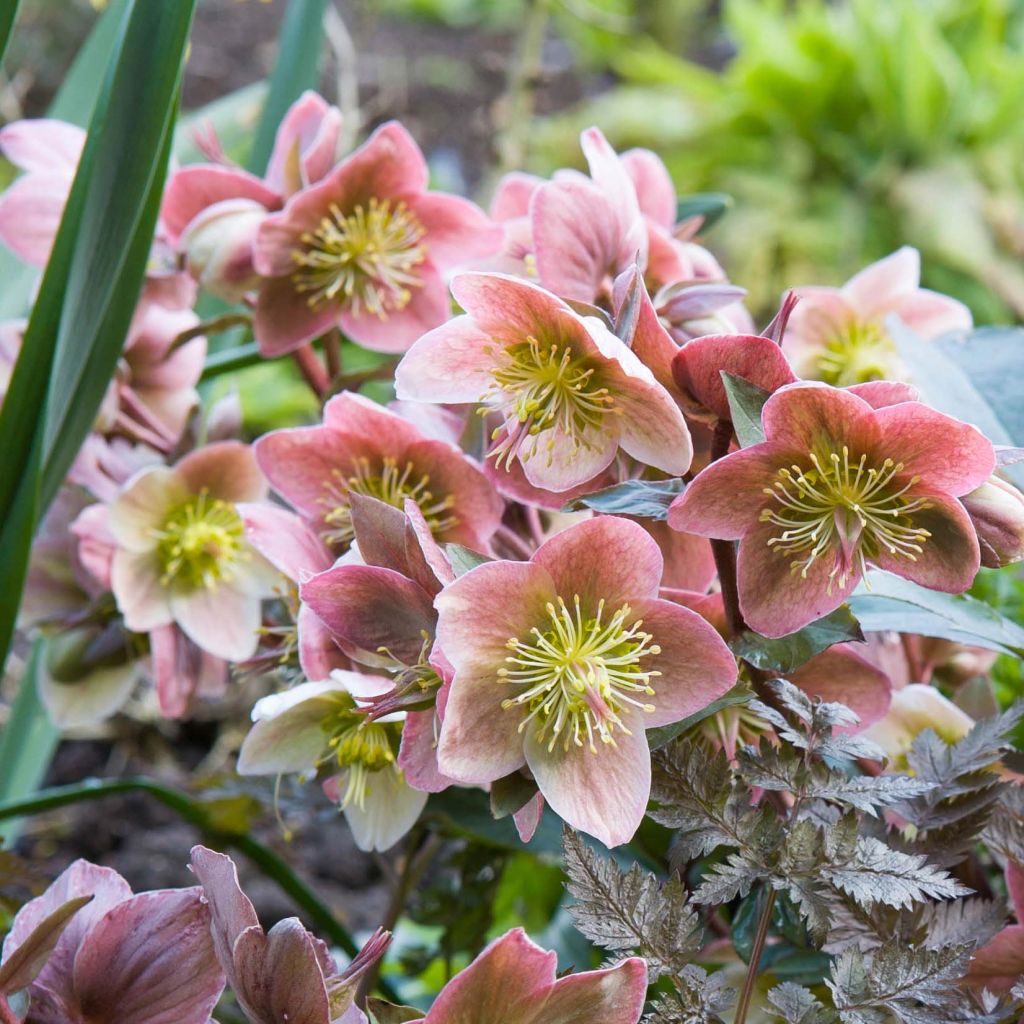

Helleborus ballardiae MAESTRO - Hellebore
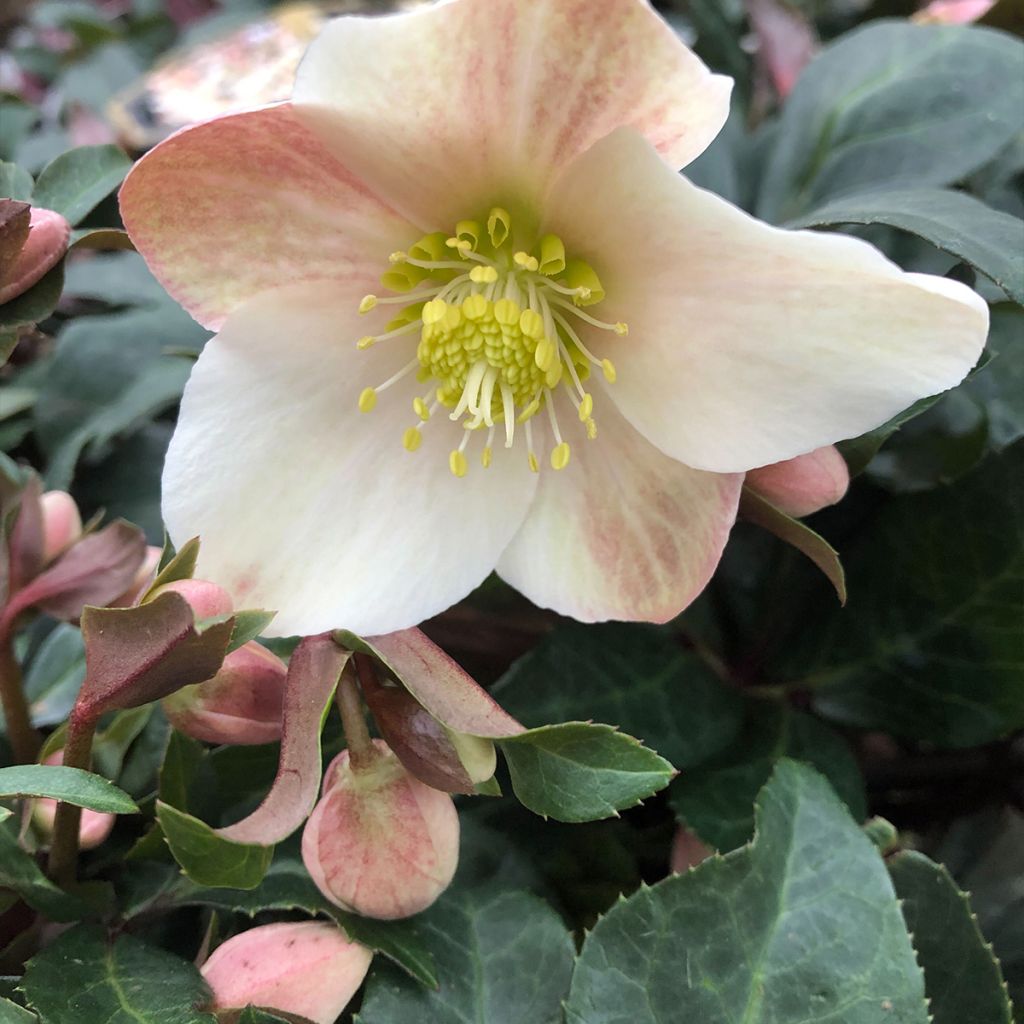

Helleborus ballardiae MAESTRO - Hellebore
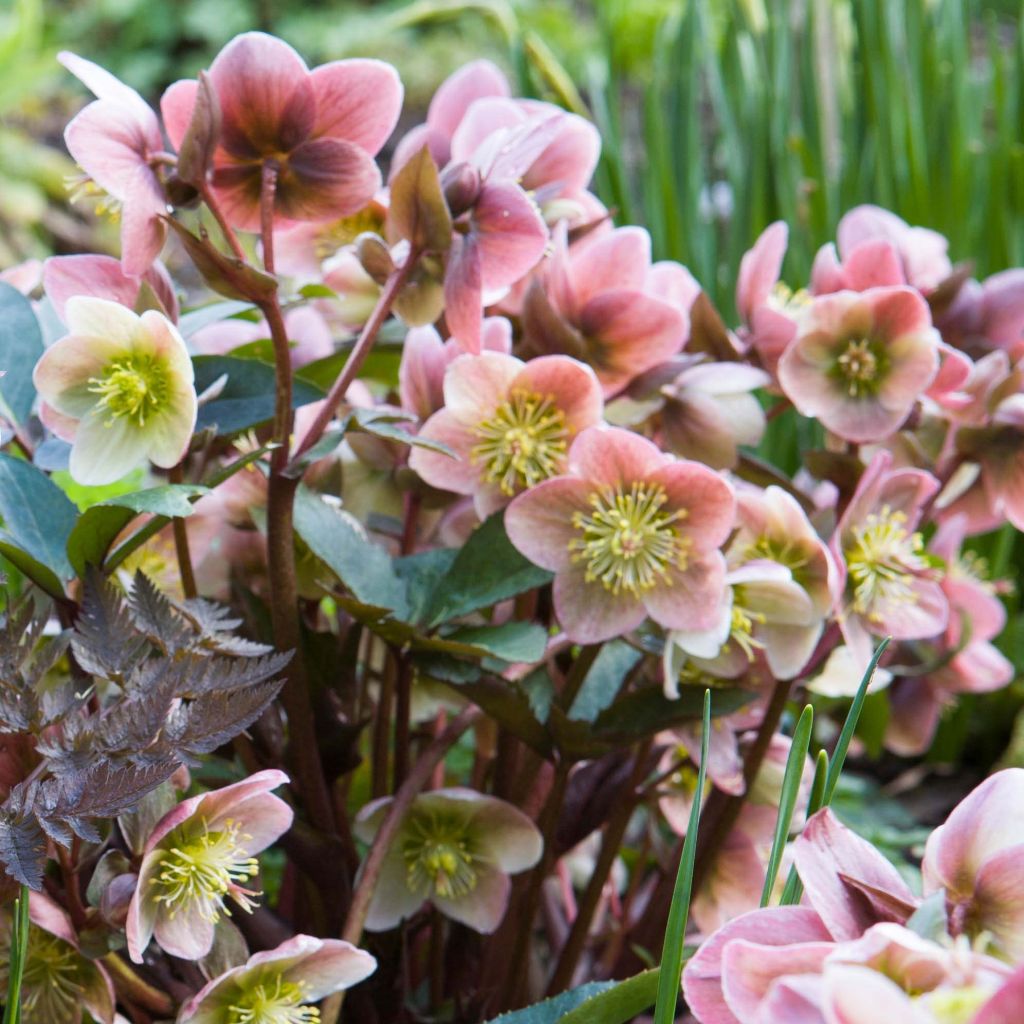

Helleborus ballardiae MAESTRO - Hellebore
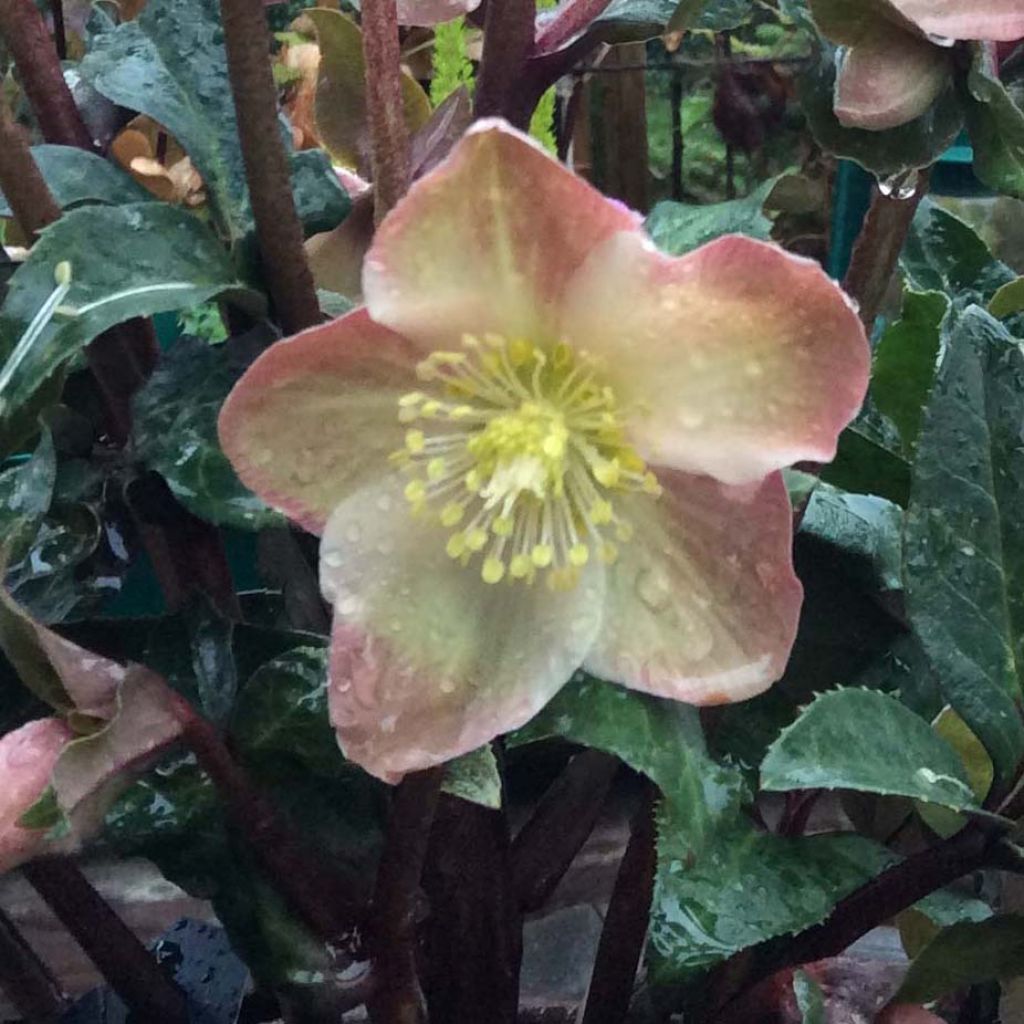

Helleborus ballardiae MAESTRO - Hellebore
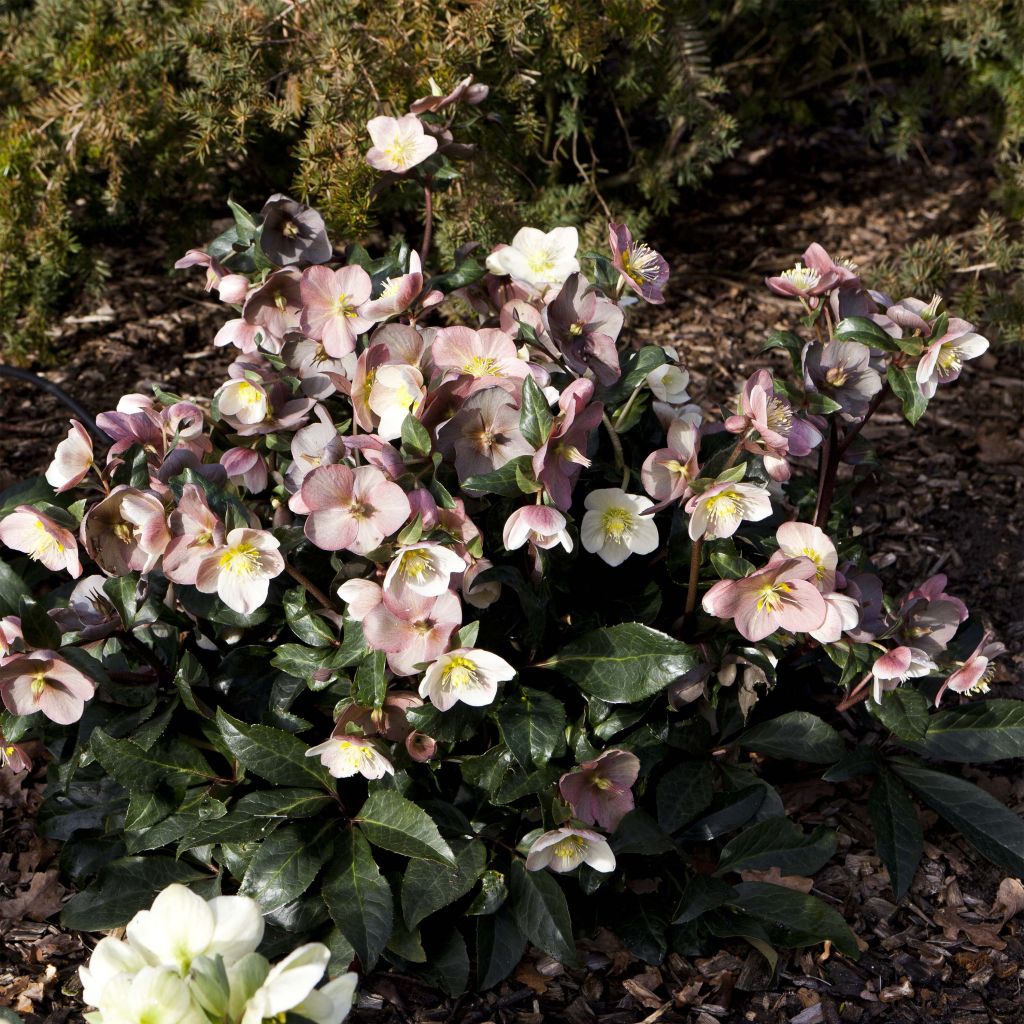

Helleborus ballardiae MAESTRO - Hellebore
Helleborus ballardiae MAESTRO - Hellebore
Helleborus x ballardiae HGC MAESTRO (Coseh 890)
Hellebore
This plant carries a 12 months recovery warranty
More information
We guarantee the quality of our plants for a full growing cycle, and will replace at our expense any plant that fails to recover under normal climatic and planting conditions.
Does this plant fit my garden?
Set up your Plantfit profile →
Description
Hellebore x ballardiae Maestro® is a new absolutely charming and remarkably floriferous hybrid Christmas rose. This variety first captivates with its very compact habit and its pretty dark green palmate foliage veined with a silvery shine, almost flat to the ground. Then comes winter and flowering, generous, delightful, in cream-white cups that blush with different shades of old pink as the days go by. This hardy perennial plant resistant to severe frost spreads in large clumps over time, delivering more and more flowers each year. This exquisite plant will live many years in the garden. It prefers fairly sunny situations, but not scorching, and tolerates heavy and chalky soils well, as long as they remain fairly moist in summer.
Hellebores belong to the Ranunculaceae family. Helleborus x ballardiae Maestro® is a very recent German horticultural hybrid, resulting from the cross-breeding of Helleborus niger (the true Christmas Rose), widespread on the forest slopes of the Central and Eastern Alps up to an altitude of 1800m (5905ft), on limestone soil, and Helleborus lividus, originating from the western islands of the Mediterranean.
The 'Maestro' Hellebore is a compact perennial plant, with remarkable longevity, fairly slow growth, but sterile; its flowering will therefore be all the more abundant and its reproduction will only be possible by dividing the clumps. It forms a low clump, with a compact and spreading habit. An adult plant will reach a minimum height of 30 to 35cm (12 to 14in) and a spread of 50cm (20in). From December to March-April, depending on the mildness of the winter, appear reddish-brown stems carrying pinkish buds that open into cream-white flowers with a powdery pink reverse, 6 to 7cm (2 to 3in) wide, with yellow stamens. They fade into different shades of old pink, becoming more intense as the days go by. The evergreen foliage is composed of fairly tough leaves, 10 to 20cm (4 to 8in) long, borne on brownish petioles. They are divided into 5 to 7 oval or lanceolate segments, toothed at the edges, dark green with a satin finish, finely veined with a light silver-green. This Hellebore is hardy down to -20°C and tolerates a wide range of soils, whether they are limestone or clay, humiferous or sandy, constantly moist or even occasionally dry in summer.
One of the main assets of this Hellebore is its generous flowering, gradually turning pink with infinite grace. From the first year, more than twenty flowers already appear on the plants. New flowers constantly form, creating a beautiful contrast between the open and faded flowers. They can be perfectly used in bouquets. It is also a good ground cover for partially shaded areas of the garden. Use Hellebores like elements of an ancient tapestry, mixing them with light shade plants in brighter colors. They are well highlighted when planted near Pieris, small-sized rhododendrons, under conifers (especially in windy sites). Surround them with beautifully named "cuckoo" primroses, wood anemones, wood hyacinths, Corydalis, bleeding hearts, cardamines, or spring-flowering bulbs and snowdrops. You can also accompany them with ferns and shade-loving Euphorbias to create a beautiful contrast a little later in the season. They can also be planted in groups, like a bouquet, near the entrance of the house, in partially shaded locations, to enjoy their early flowering up close. They are suitable for flower beds, borders as well as containers,... Over time, the flowers of the Hellebore do not fade like the majority of other flowers but dry up.
Report an error about the product description
Helleborus ballardiae MAESTRO - Hellebore in pictures
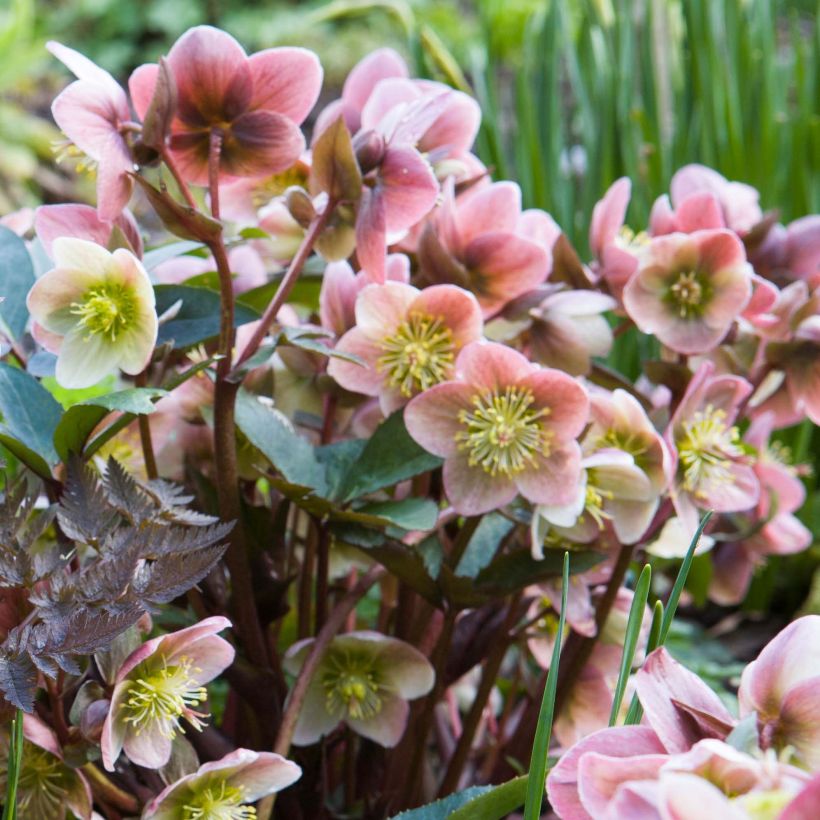

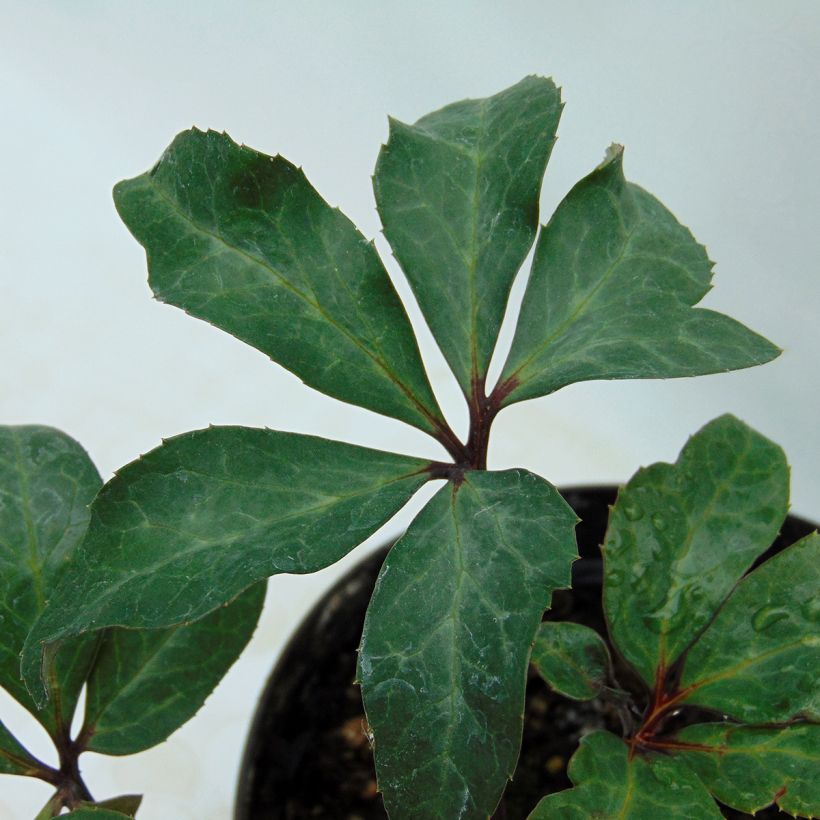

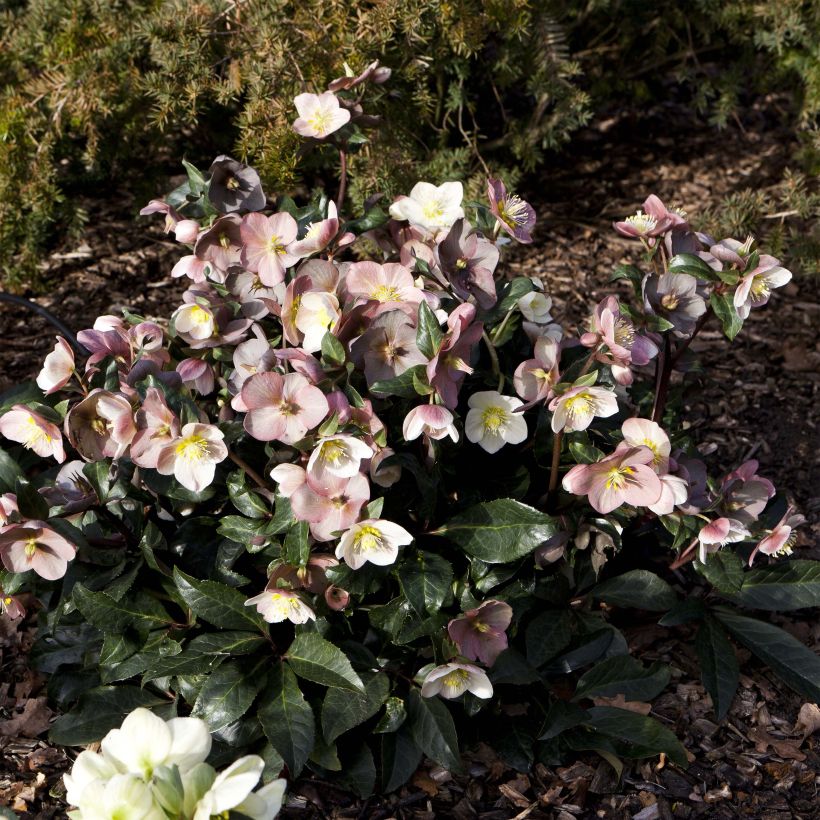

Flowering
Foliage
Plant habit
Botanical data
Helleborus
x ballardiae
HGC MAESTRO (Coseh 890)
Ranunculaceae
Hellebore
Cultivar or hybrid
Planting and care
The 'Maestro' Hellebore is not demanding in terms of soil type: it tolerates limestone and clay soils well. However, it particularly appreciates rich soils, rather heavy and well-worked, remaining moist. Plant it in partial light shade, or in morning sun, in neutral to alkaline soil, fertile, enriched with leaf compost, kept moist to help it establish. Incorporate good compost at planting. Hellebores do not like stagnant water that may cause its roots to rot. Planting under the light shade of large leafy trees is perfect. They are easy to care for plants but should not be stressed or disturbed. These perennials also have a reputation for being homebodies: once well established, they do not like to be transplanted. Young plants may take 2 to 3 years to flower, sometimes more, but afterwards, there will be no more problem. Over the weeks, their colour darkens but they do not wilt like most flowers, they rather dry up.
On a balcony or terrace, plant them in pots 4 to 5 times larger than themselves, as they need space to develop their root system. Very hardy, most hellebores tolerate negative temperatures down to -15°C (5°F) without suffering, allowing them to adapt to almost all regions.
Planting period
Intended location
Care
-
, onOrder confirmed
Reply from on Promesse de fleurs
Haven't found what you were looking for?
Hardiness is the lowest winter temperature a plant can endure without suffering serious damage or even dying. However, hardiness is affected by location (a sheltered area, such as a patio), protection (winter cover) and soil type (hardiness is improved by well-drained soil).

Photo Sharing Terms & Conditions
In order to encourage gardeners to interact and share their experiences, Promesse de fleurs offers various media enabling content to be uploaded onto its Site - in particular via the ‘Photo sharing’ module.
The User agrees to refrain from:
- Posting any content that is illegal, prejudicial, insulting, racist, inciteful to hatred, revisionist, contrary to public decency, that infringes on privacy or on the privacy rights of third parties, in particular the publicity rights of persons and goods, intellectual property rights, or the right to privacy.
- Submitting content on behalf of a third party;
- Impersonate the identity of a third party and/or publish any personal information about a third party;
In general, the User undertakes to refrain from any unethical behaviour.
All Content (in particular text, comments, files, images, photos, videos, creative works, etc.), which may be subject to property or intellectual property rights, image or other private rights, shall remain the property of the User, subject to the limited rights granted by the terms of the licence granted by Promesse de fleurs as stated below. Users are at liberty to publish or not to publish such Content on the Site, notably via the ‘Photo Sharing’ facility, and accept that this Content shall be made public and freely accessible, notably on the Internet.
Users further acknowledge, undertake to have ,and guarantee that they hold all necessary rights and permissions to publish such material on the Site, in particular with regard to the legislation in force pertaining to any privacy, property, intellectual property, image, or contractual rights, or rights of any other nature. By publishing such Content on the Site, Users acknowledge accepting full liability as publishers of the Content within the meaning of the law, and grant Promesse de fleurs, free of charge, an inclusive, worldwide licence for the said Content for the entire duration of its publication, including all reproduction, representation, up/downloading, displaying, performing, transmission, and storage rights.
Users also grant permission for their name to be linked to the Content and accept that this link may not always be made available.
By engaging in posting material, Users consent to their Content becoming automatically accessible on the Internet, in particular on other sites and/or blogs and/or web pages of the Promesse de fleurs site, including in particular social pages and the Promesse de fleurs catalogue.
Users may secure the removal of entrusted content free of charge by issuing a simple request via our contact form.
The flowering period indicated on our website applies to countries and regions located in USDA zone 8 (France, the United Kingdom, Ireland, the Netherlands, etc.)
It will vary according to where you live:
- In zones 9 to 10 (Italy, Spain, Greece, etc.), flowering will occur about 2 to 4 weeks earlier.
- In zones 6 to 7 (Germany, Poland, Slovenia, and lower mountainous regions), flowering will be delayed by 2 to 3 weeks.
- In zone 5 (Central Europe, Scandinavia), blooming will be delayed by 3 to 5 weeks.
In temperate climates, pruning of spring-flowering shrubs (forsythia, spireas, etc.) should be done just after flowering.
Pruning of summer-flowering shrubs (Indian Lilac, Perovskia, etc.) can be done in winter or spring.
In cold regions as well as with frost-sensitive plants, avoid pruning too early when severe frosts may still occur.
The planting period indicated on our website applies to countries and regions located in USDA zone 8 (France, United Kingdom, Ireland, Netherlands).
It will vary according to where you live:
- In Mediterranean zones (Marseille, Madrid, Milan, etc.), autumn and winter are the best planting periods.
- In continental zones (Strasbourg, Munich, Vienna, etc.), delay planting by 2 to 3 weeks in spring and bring it forward by 2 to 4 weeks in autumn.
- In mountainous regions (the Alps, Pyrenees, Carpathians, etc.), it is best to plant in late spring (May-June) or late summer (August-September).
The harvesting period indicated on our website applies to countries and regions in USDA zone 8 (France, England, Ireland, the Netherlands).
In colder areas (Scandinavia, Poland, Austria...) fruit and vegetable harvests are likely to be delayed by 3-4 weeks.
In warmer areas (Italy, Spain, Greece, etc.), harvesting will probably take place earlier, depending on weather conditions.
The sowing periods indicated on our website apply to countries and regions within USDA Zone 8 (France, UK, Ireland, Netherlands).
In colder areas (Scandinavia, Poland, Austria...), delay any outdoor sowing by 3-4 weeks, or sow under glass.
In warmer climes (Italy, Spain, Greece, etc.), bring outdoor sowing forward by a few weeks.



































